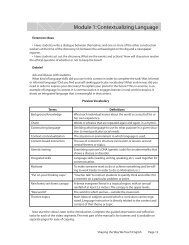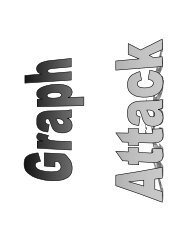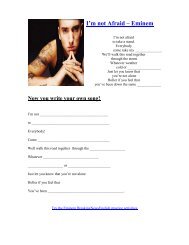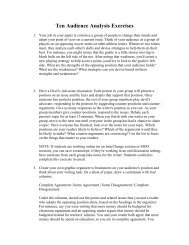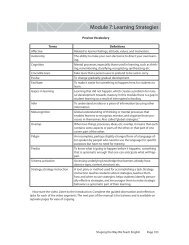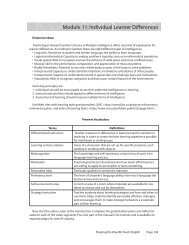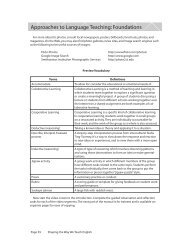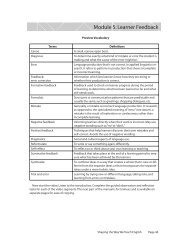A 4 Skills Teacher Resource Booklet - EFL Classroom 2.0
A 4 Skills Teacher Resource Booklet - EFL Classroom 2.0
A 4 Skills Teacher Resource Booklet - EFL Classroom 2.0
- No tags were found...
You also want an ePaper? Increase the reach of your titles
YUMPU automatically turns print PDFs into web optimized ePapers that Google loves.
8. Address questions to the group, versus the individual. Pose thequestion to the entire group and wait before identifying a student torespond. The wait time encourages all students to think about theresponse, as they do not know who is going to be called upon to answerthe question. Select students at random to answer questions, as it tendsto keep everyone attentive and involved.9. Select both volunteers and non-volunteers to answer questions.10. Adapt questions to the needs of the learners. Assess the students’needs and tailor questions to maximize the number of correct answerswhile moving toward more and more difficult questions. Remember, notwo groups of students will be alike or at the same level.11. Use sufficient wait time. The teacher can significantly enhance theanalytic and problem-solving skills of students by allowing sufficient waittimes before responding, both after posing a question and after theanswer is given. This allows everyone to think about not only the questionbut also the response provided by the student. Three to five seconds inmost cases; longer in some, maybe up to 10 seconds for higher-orderquestions.12. Respond to answers given by students. Listen carefully to the answersgiven by students; do not interrupt students while they are responding toquestions unless they are straying far off course, are totally unfocused, orare being disruptive. Acknowledge correct answers and provide positivereinforcement. Do not use sarcasm, reprimands, accusations, andpersonal attacks. Repeat answers only when the other students have notheard the answers; other repeats waste time. Keep questioning until thelearning objectives for the session have been achieved; this may be thebest opportunity to teach a particular concept. Handle incomplete answersby reinforcing what is correct and then asking probing questions.13. Use questions to identify learning objectives for follow-up self-study.Pose questions towards the end of the teaching session to identify specificareas for additional learning opportunities that students can pursue ontheir own time.Adapted from: The office of curriculum development, University of Alberta http://www.uab.edu/uasomume/cdm/



